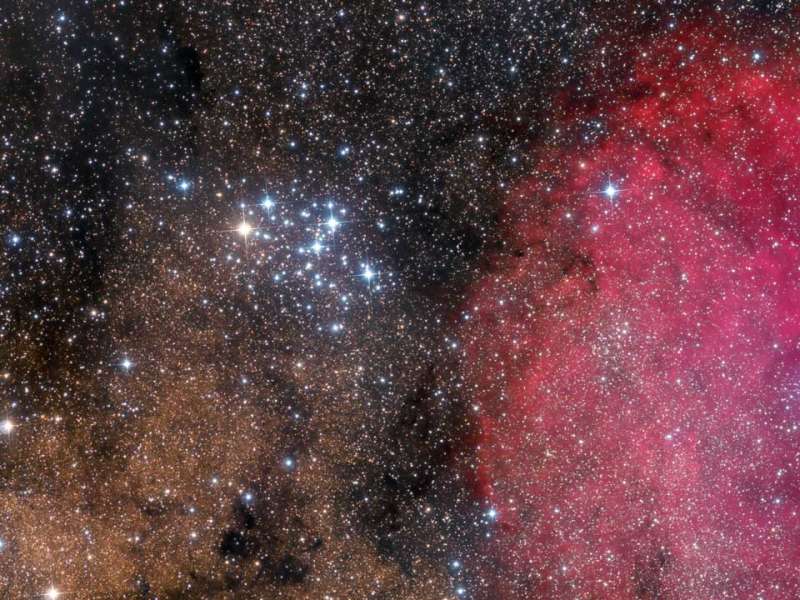Credit & Copyright: Marco Lorenzi
Explanation:
To some, the outline of the open cluster of stars M6 resembles a butterfly.
M6, also known as NGC
6405,
spans about 20 light-years and lies about
2,000 light years distant.
M6,
pictured above, can best be seen in a dark sky with binoculars
towards the constellation of the Scorpion (Scorpius), coving about as much of the sky
as the
full moon.
Like other open clusters, M6 is composed predominantly of
young blue stars,
although the brightest star is nearly orange.
M6 is estimated to be about 100 million years old.
Determining the distance to clusters like
M6
helps astronomers calibrate the distance scale of the universe.
Now Available:
APOD 2015 Wall Calendars
1999 2000 2001 2002 2003 2004 2005 2006 2007 2008 2009 2010 2011 2012 2013 2014 2015 2016 2017 2018 2019 2020 2021 2022 2023 2024 2025 |
Yanvar' Fevral' Mart Aprel' Mai Iyun' Iyul' Avgust Sentyabr' Oktyabr' Noyabr' Dekabr' |
NASA Web Site Statements, Warnings, and Disclaimers
NASA Official: Jay Norris. Specific rights apply.
A service of: LHEA at NASA / GSFC
& Michigan Tech. U.
|
Publikacii s klyuchevymi slovami:
Rasseyannoe skoplenie - shkala rasstoyanii - molodye zvezdy
Publikacii so slovami: Rasseyannoe skoplenie - shkala rasstoyanii - molodye zvezdy | |
Sm. takzhe:
Vse publikacii na tu zhe temu >> | |
